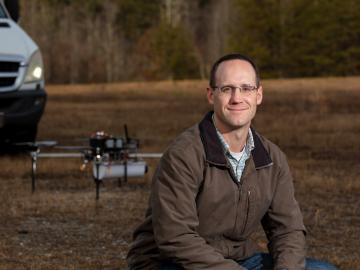
Filter News
Area of Research
- (-) Energy Science (65)
- (-) Fusion Energy (7)
- (-) National Security (25)
- Advanced Manufacturing (3)
- Biology and Environment (30)
- Computer Science (3)
- Electricity and Smart Grid (3)
- Functional Materials for Energy (1)
- Fusion and Fission (10)
- Isotope Development and Production (1)
- Isotopes (27)
- Materials (51)
- Materials for Computing (6)
- Neutron Science (9)
- Nuclear Science and Technology (20)
- Nuclear Systems Modeling, Simulation and Validation (1)
- Quantum information Science (4)
- Sensors and Controls (1)
- Supercomputing (26)
News Topics
- (-) Advanced Reactors (14)
- (-) Biotechnology (5)
- (-) Cybersecurity (25)
- (-) Grid (43)
- (-) Isotopes (1)
- (-) Microscopy (8)
- (-) Space Exploration (3)
- 3-D Printing/Advanced Manufacturing (82)
- Artificial Intelligence (19)
- Big Data (11)
- Bioenergy (28)
- Biology (14)
- Biomedical (7)
- Buildings (38)
- Chemical Sciences (14)
- Clean Water (8)
- Composites (17)
- Computer Science (43)
- Coronavirus (14)
- Critical Materials (9)
- Energy Storage (71)
- Environment (59)
- Exascale Computing (2)
- Fossil Energy (2)
- Frontier (3)
- Fusion (17)
- High-Performance Computing (10)
- Hydropower (3)
- Machine Learning (18)
- Materials (37)
- Materials Science (31)
- Mathematics (2)
- Mercury (3)
- Microelectronics (1)
- Molten Salt (1)
- Nanotechnology (9)
- National Security (37)
- Neutron Science (15)
- Nuclear Energy (21)
- Partnerships (16)
- Physics (2)
- Polymers (11)
- Quantum Science (3)
- Security (15)
- Simulation (4)
- Statistics (1)
- Summit (7)
- Transportation (68)
Media Contacts

A developing method to gauge the occurrence of a nuclear reactor anomaly has the potential to save millions of dollars.

Two staff members at the Department of Energy’s Oak Ridge National Laboratory have received prestigious HENAAC and Luminary Awards from Great Minds in STEM, a nonprofit organization that focuses on promoting STEM careers in underserved

Horizon31, LLC has exclusively licensed a novel communication system that allows users to reliably operate unmanned vehicles such as drones from anywhere in the world using only an internet connection.

Combining expertise in physics, applied math and computing, Oak Ridge National Laboratory scientists are expanding the possibilities for simulating electromagnetic fields that underpin phenomena in materials design and telecommunications.

ORNL researchers have developed an intelligent power electronic inverter platform that can connect locally sited energy resources such as solar panels, energy storage and electric vehicles and smoothly interact with the utility power grid.

From materials science and earth system modeling to quantum information science and cybersecurity, experts in many fields run simulations and conduct experiments to collect the abundance of data necessary for scientific progress.

Five researchers at the Department of Energy’s Oak Ridge National Laboratory have been named ORNL Corporate Fellows in recognition of significant career accomplishments and continued leadership in their scientific fields.

Oak Ridge National Laboratory researchers have built a novel microscope that provides a “chemical lens” for viewing biological systems including cell membranes and biofilms.

The Department of Energy’s Office of Science has selected three Oak Ridge National Laboratory scientists for Early Career Research Program awards.

ITER, the world’s largest international scientific collaboration, is beginning assembly of the fusion reactor tokamak that will include 12 different essential hardware systems provided by US ITER, which is managed by Oak Ridge National Laboratory.


